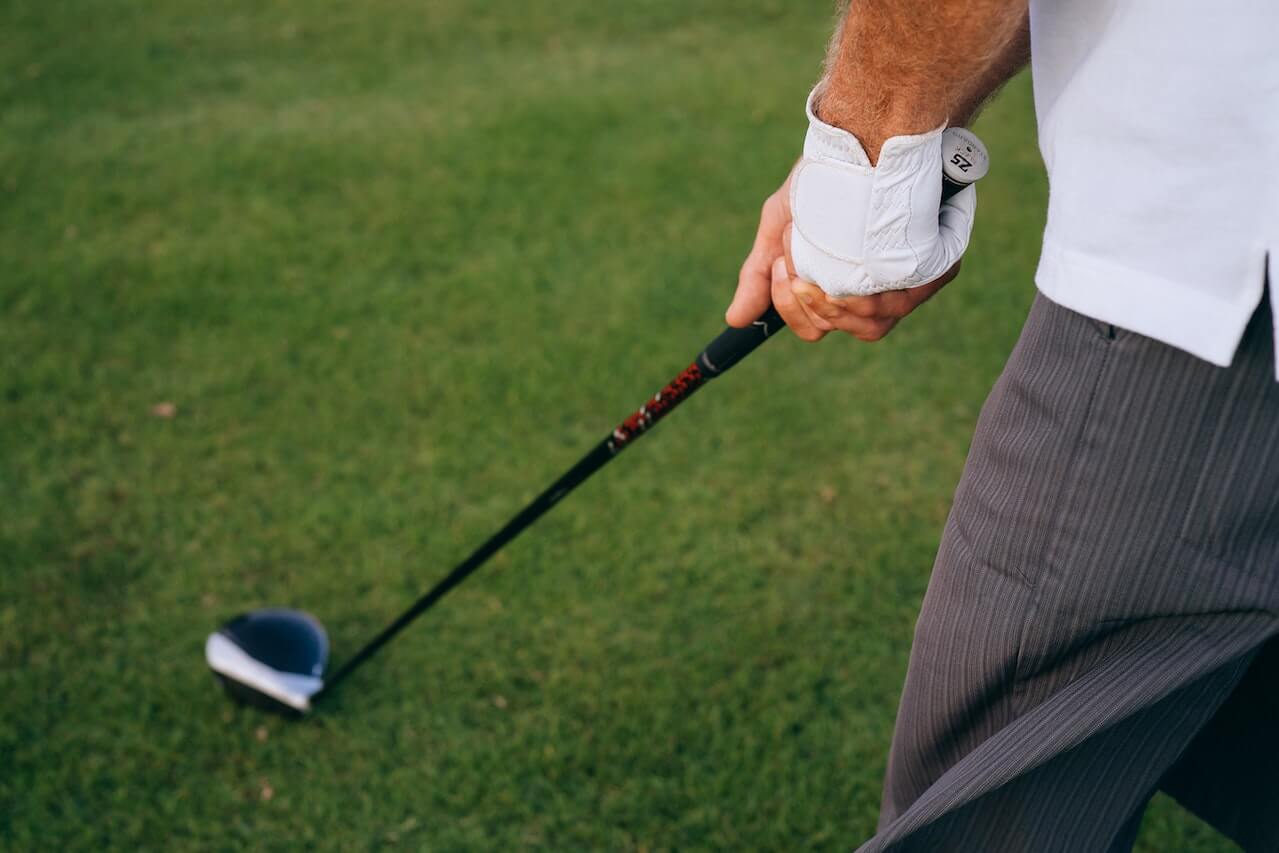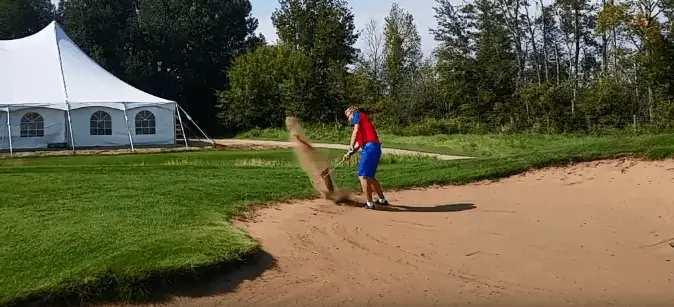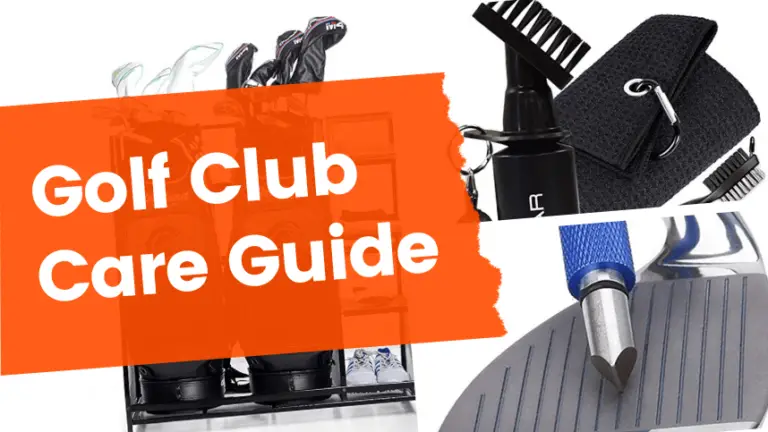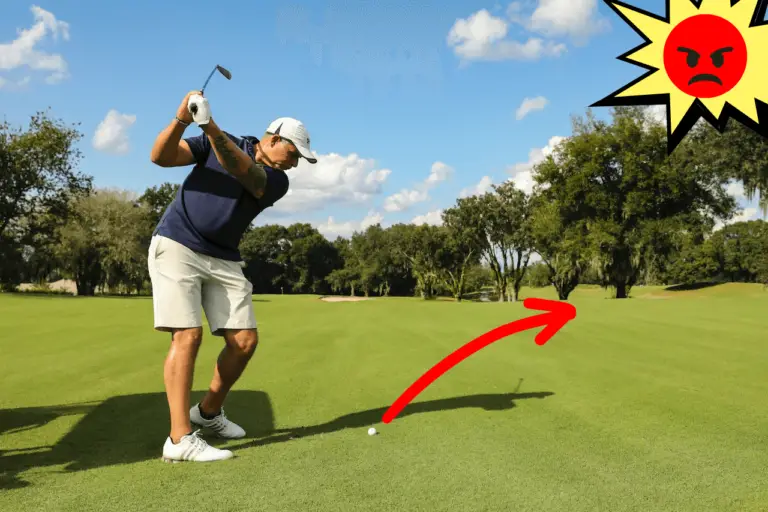How to Grip a Golf Club (2024)

A Step-By-Step Guide for Beginner Golfers
The golf grip is the way you hold the club and is a crucial element of your golf swing. A proper grip allows you to control the clubface and strike the ball consistently and accurately. It is important to understand the role of each hand in the grip and how to hold the club to optimize your swing. In this article, we will provide a step-by-step guide on how to grip a golf club, including the importance of a proper grip, different styles of golf grips, grip strength and pressure, and tips for maintaining a proper grip. We will also answer frequently asked questions about the golf grip to help you improve your game. Whether you are a beginner or an experienced golfer, learning the proper golf grip can make a significant difference in your performance on the course.
The Role of Each Hand in the Golf Grip
One of the key elements of a proper golf grip is the balance between your left hand (for right-handed golfers) and your right hand. The left-hand plays a crucial role in controlling the clubface, while the right hand provides stability and power.
To grip the club with your left hand, hold the club in the fingers of your hand rather than the palm. Place the club in your fingers with the handle running diagonally across your palm. Make sure the club is positioned so that the V created by your thumb and index finger is pointing towards your right shoulder.
To grip the club with your right hand, place the club in your fingers and wrap your fingers around the handle. The right hand should be positioned below the left hand on the handle, with the right thumb running down the side of the club.
It is important to maintain a balance between the left and right hand in your grip. If one hand is too dominant, it can cause issues with your swing and affect the accuracy of your shots. Experiment with different grip positions to find the balance that feels most comfortable and natural for you.
The Importance of a Proper Golf Grip
A proper golf grip is essential for controlling the clubface and striking the ball consistently. A good grip allows you to square the clubface at impact, resulting in straighter and more accurate shots. A poor grip, on the other hand, can cause issues with your swing and result in mis-hits and off-center shots.
In addition to improving your accuracy, a proper grip can also help you generate more power and distance in your shots. By gripping the club correctly, you can transfer more energy from your body to the club, resulting in longer and more explosive shots.
A proper grip is also important for reducing the risk of injury. An incorrect grip can put unnecessary strain on your wrist and elbow, leading to muscle fatigue and overuse injuries. A proper grip helps you maintain a natural and comfortable swing, reducing the risk of injury and allowing you to play pain-free.
Overall, a proper golf grip is crucial for optimizing your swing and improving your performance on the course. It is worth taking the time to learn and practice a proper grip to maximize your potential as a golfer.
Different Styles of Golf Grips
There are several different styles of golf grips that you can use, each with its own unique characteristics and benefits. The most common styles of golf grips are the Vardon grip, the interlocking grip, and the baseball grip.
The Vardon Grip
Also known as the overlapping grip, is named after Harry Vardon, a famous golfer from the late 1800s. To use the Vardon grip, place your left hand on the club with the handle running diagonally across your palm, as described in the previous section. Then, take your right hand and place it on the handle with the pinkie finger of your right-hand interlocking with the index and middle fingers of your left hand. This grip is popular among professional golfers because it allows for a natural and comfortable grip on the club.
The Interlocking Grip
Similar to the Vardon grip, the fingers of the right hand are interlocked with the fingers of the left hand rather than the index and middle fingers. This grip is often used by golfers with smaller hands or those who struggle to maintain a proper Vardon grip.
The 10-Finger Grip
Also known as the baseball grip, is a grip where both hands are placed on the club in a way that is similar to how you would hold a baseball bat. This grip is often used by beginners and is a good option for those who find the Vardon or interlocking grip uncomfortable.
It is important to experiment with different grip styles to find the one that works best for you. What works for one golfer may not necessarily work for another, so it is worth trying out different styles to see what feels most comfortable and natural for your swing.
Grip Strength and Grip Pressure
In addition to the position of your hands on the club, the amount of grip strength and pressure you use can also affect your golf swing. Too much grip strength can cause the club to be too tense in your hands, leading to a lack of control and accuracy in your shots. On the other hand, too little grip strength can cause the club to slip in your hands, resulting in mis-hits and loss of power.
Grip pressure is also important in maintaining control of the club. A grip that is too tight can cause tension in your forearms and limit the range of motion in your swing. A grip that is too loose can cause the club to feel unstable in your hands and negatively impact your accuracy.
To find the right balance of grip strength and pressure, it is important to relax your grip on the club and focus on maintaining a light and comfortable hold. Experiment with different levels of grip strength and pressure to find what feels most natural and effective for your swing.
It is also important to remember that the amount of grip strength and pressure you use may vary depending on the club you are using. For example, you may need to use a slightly firmer grip on your driver compared to your wedges, as the driver requires more power and control. Experiment with different grip pressures on different clubs to find what works best for you.
Tips for Maintaining a Proper Golf Grip
Here are some tips for maintaining a proper golf grip:
- Practice your grip: The more you practice your grip, the more comfortable and natural it will feel. Spend some time each day working on your grip, starting with a light grip and gradually increasing the pressure as you get more comfortable.
- Use grip aids: There are several grip aids on the market that can help you maintain a proper grip on the club. These include grip trainers, grip wraps, and grip solvents, which can help you find the right balance of grip strength and pressure.
- Check your grip position: Make sure your hands are positioned correctly on the club. Your left hand should be on top of the club, with the handle running diagonally across your palm, and your right hand should be below your left hand on the handle.
- Pay attention to your grip pressure: Make sure your grip pressure is not too tight or too loose. A light and comfortable grip allows for a more natural and fluid swing.
- Experiment with different grip styles: As mentioned earlier, there are several different styles of golf grips to choose from. Experiment with different styles to find what works best for you and your swing.
By following these tips, you can maintain a proper golf grip and optimize your swing for improved performance on the course.
Frequently Asked Questions about the Golf Grip
Here are some frequently asked questions about the golf grip:
Q: Can I change my grip style?
A: Yes, you can change your grip style if you are not comfortable with your current grip or if you want to try a different style. It is important to experiment with different grip styles to find what works best for you and your swing.
Q: How do I know if my grip is correct?
A: A proper grip should feel natural and comfortable in your hands. You should be able to hold the club without any tension or strain in your wrists or forearms. You should also be able to control the clubface and strike the ball consistently and accurately. If you are having issues with your grip, consider seeking the guidance of a golf instructor or coach.
Q: Can a poor grip cause slicing or hooking?
A: Yes, a poor grip can cause issues with your swing and result in slicing or hooking. A grip that is too strong or too weak can cause the clubface to be misaligned at impact, resulting in off-center shots. It is important to maintain a proper grip to optimize your swing and improve your accuracy.
Q: Can a grip that is too strong or too weak affect my shots?
A: Yes, a grip that is too strong or too weak can affect your shots. A grip that is too strong can cause the club to be too tense in your hands, leading to a lack of control and accuracy. A grip that is too weak can cause the club to feel unstable in your hands and result in mis-hits and loss of power. It is important to find the right balance of grip strength and pressure to optimize your swing and improve your performance on the course.
Q: How do I adjust my grip for different clubs?
A: The amount of grip strength and pressure you use may vary depending on the club you are using. For example, you may need to use a slightly firmer grip on your driver compared to your wedges, as the driver requires more power and control. Experiment with different grip pressures on different clubs to find what works best for you. It is also a good idea to practice with different clubs to get a feel for the appropriate grip strength and pressure for each one.
Final Thoughts on How to Grip a Golf Club
In this article, we have provided a step-by-step guide on how to grip a golf club, including the role of each hand, the importance of a proper grip, different styles of golf grips, grip strength and pressure, and tips for maintaining a proper grip. We have also answered frequently asked questions about the golf grip to help you improve your game.
Remember, a proper golf grip is essential for optimizing your swing and improving your performance on the course. It is worth taking the time to learn and practice a proper grip to maximize your potential as a golfer. Experiment with different grip styles and pay attention to grip strength and pressure to find what works best for you and your swing. With practice and patience, you can develop a comfortable and effective golf grip that will help you play your best on the course.







